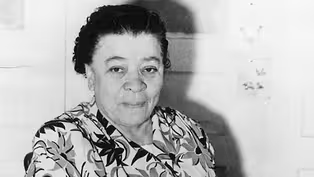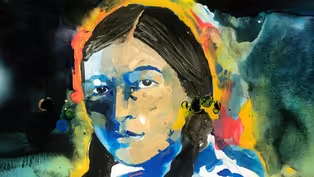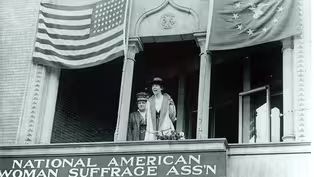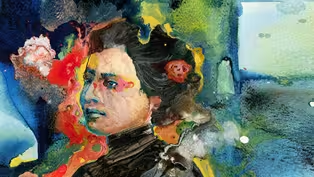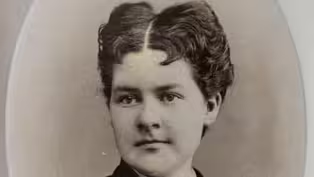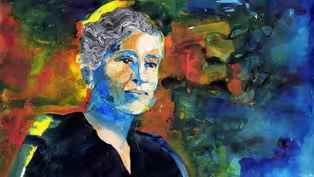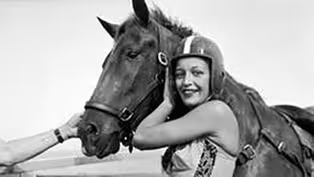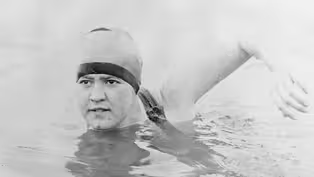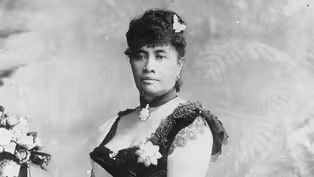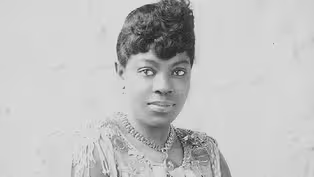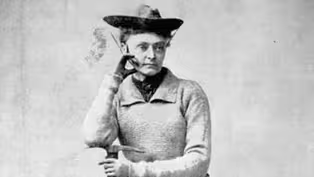
Ynés Mexía: Mexican-American Botanist and Adventurer
Special | 9m 17sVideo has Closed Captions
Ynés Mexía became one of the most accomplished plant collectors of her time.
An early participant in the environmental movement, U.S.-born Mexican American Ynés Mexía began her scientific career at age 51, leading botanical expeditions across Mexico, Central America, and South America. She became one of the most accomplished plant collectors of her time, discovering over 500 new plant species of which 50 are named in her honor.
Problems playing video? | Closed Captioning Feedback
Problems playing video? | Closed Captioning Feedback
Support for American Masters is provided by the Corporation for Public Broadcasting, AARP, Rosalind P. Walter Foundation, Judith and Burton Resnick, Blanche and Hayward Cirker Charitable Lead Annuity Trust, Koo...

Ynés Mexía: Mexican-American Botanist and Adventurer
Special | 9m 17sVideo has Closed Captions
An early participant in the environmental movement, U.S.-born Mexican American Ynés Mexía began her scientific career at age 51, leading botanical expeditions across Mexico, Central America, and South America. She became one of the most accomplished plant collectors of her time, discovering over 500 new plant species of which 50 are named in her honor.
Problems playing video? | Closed Captioning Feedback
How to Watch American Masters
American Masters is available to stream on pbs.org and the free PBS App, available on iPhone, Apple TV, Android TV, Android smartphones, Amazon Fire TV, Amazon Fire Tablet, Roku, Samsung Smart TV, and Vizio.
Buy Now
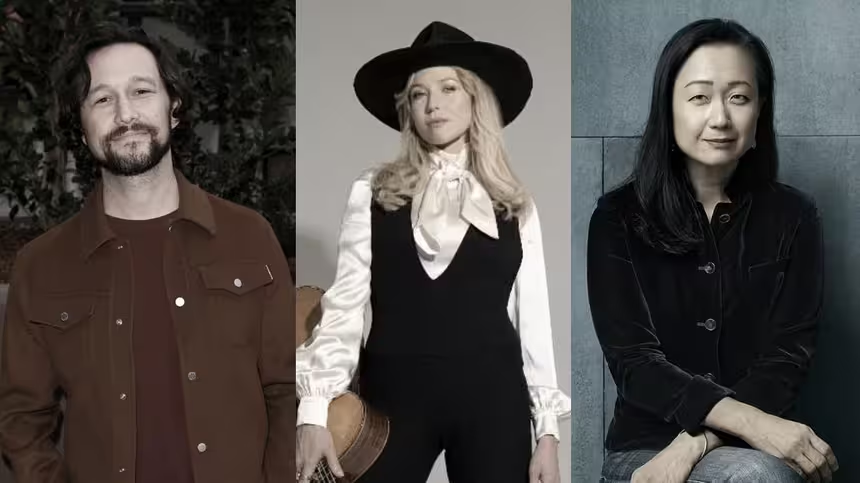
A front row seat to the creative process
How do today’s masters create their art? Each episode an artist reveals how they brought their creative work to life. Hear from artists across disciplines, like actor Joseph Gordon-Levitt, singer-songwriter Jewel, author Min Jin Lee, and more on our podcast "American Masters: Creative Spark."Providing Support for PBS.org
Learn Moreabout PBS online sponsorshipMore from This Collection
Illuminating the stories of extraordinary American heroines from the early years of feminism, American Masters — Unladylike2020 presents 26 digital short films featuring courageous, little-known and diverse female trailblazers from the turn of the 20th century.
The First Black Woman to Run for Vice President of The U.S.
Video has Closed Captions
Charlotta Bass was the first Black woman to run for Vice President of the United States. (12m 32s)
Zitkála-Šá: Trailblazing American Indian Composer and Writer
Video has Closed Captions
Zitkála-Šá co-composed and wrote the libretto for the first American Indian opera. (11m 39s)
Jeannette Rankin: The First Woman Member of U.S. Congress
Video has Closed Captions
Jeannette Rankin made history as the first woman elected to the U.S. Congress. (12m 38s)
Jovita Idar: Mexican American Activist and Journalist
Video has Closed Captions
Jovita Idar was a Latina journalist who worked for an end to segregation and racism. (11m 8s)
Martha Hughes Cannon: The First Woman State Senator
Video has Closed Captions
Martha Hughes Cannon was a historic state senator and public health pioneer. (12m 23s)
She was a Civil Rights Activist and Co-Founder of the NAACP
Video has Closed Captions
Mary Church Terrell was a suffragist, civil rights activist and co-founder of the NAACP. (11m 53s)
She was a Daredevil Performer & Advocate for the Blind
Video has Closed Captions
Sonora Webster Carver (1904-2003) was one of the most famous horse divers in the world. (10m 2s)
She was the First Woman to Swim Across the English Channel
Video has Closed Captions
Gertrude Ederle made history in 1926 as the first woman to swim across the English Channel (11m 54s)
Queen Lili‘uokalani - The First and Last Queen of Hawai‘i
Video has Closed Captions
Queen Lili‘uokalani was the first sovereign queen, and the last monarch of Hawai'i. (12m 14s)
Sissieretta Jones was a Trailblazing Black Opera Singer
Video has Closed Captions
Sissieretta Jones was the first Black woman to headline a concert at Carnegie Hall. (11m 5s)
The First American Indian Doctor
Video has Closed Captions
Susan La Flesche Picotte became the first American Indian woman doctor. (11m 37s)
Annie Smith Peck: Record-Breaking Mountaineer
Video has Closed Captions
She was a record-breaking mountaineer, educator and suffragist. (10m 40s)
Providing Support for PBS.org
Learn Moreabout PBS online sponsorshipShe's the most accomplished female plant collector of her time.
And she did not start until she was 55 years old.
1929, Brazil.
59-year-old Ynés Mexía undertook the greatest adventure of her career -- a two-and-a-half-year expedition, traveling 3,000 miles up the Amazon River by steamship and canoe.
She went out collecting by herself, with a guide because she realized that you can't go off into the wilderness totally by yourself because you don't know the terrain.
Of course being fluent Spanish, she can talk to all these guides.
And it was interesting because she'd teach her guides how to do some of the pressing.
"After more than two years in the wilds of South America, I find myself longing for a nice, quiet jungle again."
Ynés Enriquetta Julietta Mexía was born in 1870 in Washington, DC, where her Mexican father was stationed as a diplomat.
At one year old, she moved to Mexia, Texas, a town founded by her ancestors.
Ynés was very shy, very quiet.
Liked to keep to herself, read a lot of books.
Her parents separated when Ynés was nine and immediately put her into a private boarding school.
And so Ynés' early life was probably very painful, because she just was all by herself.
After finishing her studies, Mexía considered entering a convent, but in 1896, her dying father asked her to take over his business in Mexico.
He has a huge ranch, he is quite wealthy.
She takes over the managing of the ranch and becomes a very adept.
Mexía married twice.
Her first husband died after a long illness.
Her second bankrupted the ranch.
And at that point, it's just too hard on her.
She literally goes into bed and crawls up in a fetus position.
It's a mental and a physical breakdown.
In 1909, Mexía moved to San Francisco to seek medical help from Dr. Phillip King Brown.
He was a psychiatrist.
That was a very new field in 1909.
He became the father figure that she never had.
Mexía remained under Dr. Brown's care for 10 years.
At his encouragement, she joined California's budding environmental movement.
She became a valuable part of the Sierra Club and Save the Redwoods League on the forefront of fighting for the national parks.
"I have been much distressed to hear cutting has been going on in Montgomery Grove.
I'm heartily in sympathy with any effort to save these trees."
This shy woman joins this outgoing club with excursions to the Redwoods and excursions to Yosemite, and camping out and going on hikes.
And she just loves it.
Mexía decided to pursue science and natural history courses at UC Berkeley.
This is 1921, no woman goes back to college at 51 years old, but she did.
And she discovered botany.
Suddenly here was the life goal that she had never realized before that she would have and she loved collecting plants.
"I have a job where I produce something real and lasting."
Women were to be confined to the kitchen, the garden, and the baby room.
So botany was more acceptable for women scientists because it's a logical extension of women being caretakers.
My name is Ina Vandebroek.
I'm an ethnobotanist at the New York Botanical Garden.
Plants are really the essence of human life.
Without plants we do not have oxygen.
Without plants we do not have food.
And at least one in four of our medicines is made from plants.
In 1925, Mexía took her first plant collecting trip to Mexico, on a group expedition sponsored by Stanford University.
But she soon realized she could be more productive alone.
She secured funding from several natural history institutions willing to pay her 20 cents per specimen.
56 years old and never stopped after that.
She went into Mazatlan, and then into the Sierra Madre mountains.
"My driers get all filled up and still numberless plants sit and look at me and announce that they're waiting to be collected.
It is terribly trying to greedy collector like myself."
Her trip didn't end exactly as she had planned because she saw a plant, reached over to get it, and fell down a cliff and got a few ribs broken and I think an arm.
Nonetheless, the expedition resulted in 500 plant specimens.
One of them, Mexianthus mexicanus, became the first of many named in her honor.
Mexía's reputation as the first Mexican American female botanist grew, and botanical institutions around the U.S. sponsored her expeditions.
For the next 12 years, Mexía collected plants across North and South America, from Alaska to Tierra Del Fuego.
"A well known collector and explorer stated very positively that 'It was impossible for a woman to travel alone in Latin America'... Well, why not?...I decided to make my way right across it."
Ynés very much did what botanists are doing now, minus the technological developments like DNA analysis, collecting plants, naming them, describing them, classifying them.
Which is the basic building block of all biodiversity science.
One third of all the 450,000 estimated flowering plants that exist on earth are under threat of extinction.
There is urgency to protecting that plant diversity, because we need them for our survival.
On her last expedition in Mexico in 1938, Mexía became sick and was soon diagnosed with lung cancer.
She died a few months later at age 68, leaving much of her estate to the Sierra Club and the Save The Redwoods League.
In a 13 year career, she collected more than 145,000 specimens.
A new genus was named for her and then she had 50 other new species named after her, plus 500 other discoveries.
Over the last three decades, there has been a lot of talk about including women in STEM, science, technology, engineering, and maths, and progress has been made, but we still have a long way to go.
Especially the representation of women from immigrant communities and women of color in science, to be in leadership roles, be recognized for their contributions.
"In all of my travels I've never been attacked by a wild animal, lost my way or caught a disease...
I don't think there's any place in the world where a woman can't venture."
Support for PBS provided by:
Support for American Masters is provided by the Corporation for Public Broadcasting, AARP, Rosalind P. Walter Foundation, Judith and Burton Resnick, Blanche and Hayward Cirker Charitable Lead Annuity Trust, Koo...

